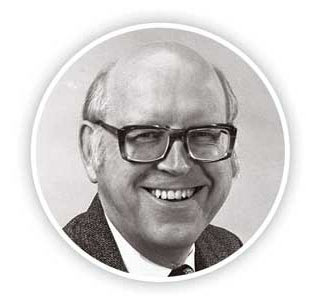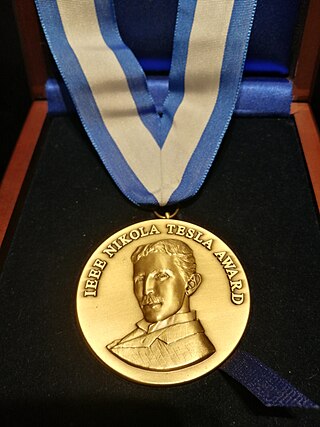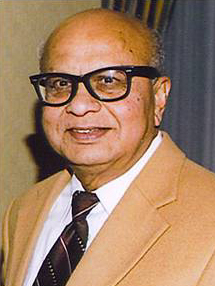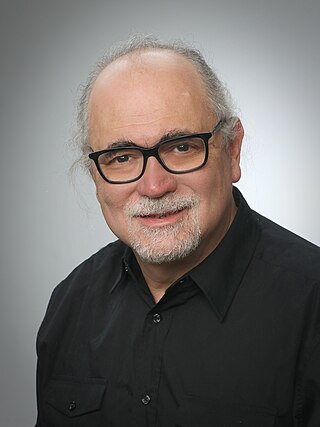This article needs additional citations for verification .(February 2013) |
Dr. William E. Newell (died 1976) was an author and "noted authority on power electronics". He worked at the Westinghouse Research and Development Center in Pittsburgh.
This article needs additional citations for verification .(February 2013) |
Dr. William E. Newell (died 1976) was an author and "noted authority on power electronics". He worked at the Westinghouse Research and Development Center in Pittsburgh.
The William E. Newell Power Electronics Award was created in 1977 by the Power Electronics Society, [1] and in 2005, the IEEE established another award in his name, this one called the IEEE William E. Newell Power Electronics Award.

Allen Newell was an American researcher in computer science and cognitive psychology at the RAND Corporation and at Carnegie Mellon University's School of Computer Science, Tepper School of Business, and Department of Psychology. He contributed to the Information Processing Language (1956) and two of the earliest AI programs, the Logic Theorist (1956) and the General Problem Solver (1957). He was awarded the ACM's A.M. Turing Award along with Herbert A. Simon in 1975 for their contributions to artificial intelligence and the psychology of human cognition.

Power engineering, also called power systems engineering, is a subfield of electrical engineering that deals with the generation, transmission, distribution, and utilization of electric power, and the electrical apparatus connected to such systems. Although much of the field is concerned with the problems of three-phase AC power – the standard for large-scale power transmission and distribution across the modern world – a significant fraction of the field is concerned with the conversion between AC and DC power and the development of specialized power systems such as those used in aircraft or for electric railway networks. Power engineering draws the majority of its theoretical base from electrical engineering and mechanical engineering.
IEEE W.R.G. Baker Award provided by the Institute of Radio Engineers (IRE), was created in 1956 from a donation from Walter R. G. Baker (1892–1960) to the IRE. The award continued to be awarded by the board of directors of the Institute of Electrical and Electronics Engineers (IEEE), after the IRE organization merged into the IEEE in 1963. Recipients received a certificate and honorarium "for the most outstanding paper reporting original work" in one of the IEEE publications, including the transactions, journals, proceedings, and magazines of the IEEE Societies. The award was discontinued in 2016.
The National Electronics Museum, located in Hunt Valley, Maryland, displays the history of the United States defense electronics. The museum houses exhibits containing assortments of telegraphs, radios, radars and satellites. Located near the light rail stop at Gilroy Road, the museum displays hands-on electronics. The library serves as a research center open to the public. In addition, an amateur radio station is broadcast live from the museum each week. K3NEM/W3GR includes both antique and updated communication equipment.
The IEEE Edison Medal is presented by the Institute of Electrical and Electronics Engineers (IEEE) "for a career of meritorious achievement in electrical science, electrical engineering, or the electrical arts." It is the oldest medal in this field of engineering. The award consists of a gold medal, bronze replica, certificate, and honorarium. The medal may only be awarded to a new leap/breakthrough in the technological area of science.

The IEEE Nikola Tesla Award is a Technical Field Award given annually to an individual or team that has made an outstanding contribution to the generation or utilization of electric power. It is awarded by the Board of Directors of the IEEE. The award is named in honor of Nikola Tesla. This award may be presented to an individual or a team.
The initially called AIEE Lamme Medal was established in 1924 by the American Institute of Electrical Engineers (AIEE) to recognize members for 'meritorious achievement in the development of electrical apparatus or machinery.' The medal was named in recognition of Benjamin G. Lamme, Westinghouse' chief engineer, who amongst others was responsible for the construction of the Niagara Falls generators.

An electric power system is a network of electrical components deployed to supply, transfer, and use electric power. An example of a power system is the electrical grid that provides power to homes and industries within an extended area. The electrical grid can be broadly divided into the generators that supply the power, the transmission system that carries the power from the generating centers to the load centers, and the distribution system that feeds the power to nearby homes and industries.
The IEEE William E. Newell Power Electronics Award is a Technical Field Award of the IEEE that was established by the IEEE Board of Directors in 2005. This award is presented annually for outstanding contribution(s) to the advancement of power electronics. The award is named in honor of William E. Newell.

Harvey C. Nathanson was an American electrical engineer who invented the first MEMS device of the type now found in products ranging from iPhones to automobiles.
Robert David Middlebrook was a professor of electrical engineering at the California Institute of Technology (Caltech). He is most well known in the field of power electronics and as a proponent of design-oriented circuit analysis.

Bimal Kumar Bose, also known as B. K. Bose, is an electrical engineer, artificial intelligence researcher, scientist, educator, and currently a professor emeritus of power electronics in the Department of Electrical Engineering and Computer Science at the University of Tennessee, Knoxville.

Frede Blaabjerg is a Danish professor at Aalborg University. At Aalborg, he works in the section of Power Electronic Systems of the department of Energy Technology. Blaabjerg's research concerns the applications of power electronics, including adjustable-speed drives, microgrids, photovoltaic systems, and wind turbines. By the number of citations, he is the most cited author of several IEEE journals: IEEE Transactions on Power Electronics, IEEE Transactions on Industry Applications, IEEE Journal of Emerging and Selected Topics in Power Electronics.
James Beverly Owens was an American engineer and company executive.

Marcelo Godoy Simões is a Brazilian-American scientist engineer, professor in Electrical Engineering in Flexible and Smart Power Systems, at the University of Vaasa. He was with Colorado School of Mines, in Golden, Colorado, for almost 21 years, where he is a Professor Emeritus. He was elevated to Fellow of the Institute of Electrical and Electronics Engineers (IEEE) for applications of artificial intelligence in control of power electronics systems.
Marco Liserre is a University Professor in electrical engineering currently Head of the Chair of Power Electronics at the University of Kiel in Kiel, Germany. He was named a Fellow of the Institute of Electrical and Electronics Engineers (IEEE) in 2013. He is Deputy Director of Fraunhofer ISIT and Founder of ISIT@CAU, 2022. Prof. Liserre is also honored with the prestigious IEEE PELS R. David Middlebrook Achievement Award for the year 2023.
Remus Teodorescu (02.06.1965) is a professor of Energy Technology at Aalborg University. He holds a degree from 1989 in electrical engineering from the Politehnica University of Bucharest in Romania. In 1994 he received a Ph.D. degree in power electronics from the University of Galati in Romania.
Hirofumi Akagi is a Japanese electrical engineer and professor at Tokyo Institute of Technology, IEEE Fellow.
William McMurray (1929–2006) was a pioneer in the field of power electronics. Holding both British and American citizenship, he was an electrical engineer, author and inventor who held 23 patents, and was most notable for his invention of the McMurray inverter and the McMurray-Bedford inverter.